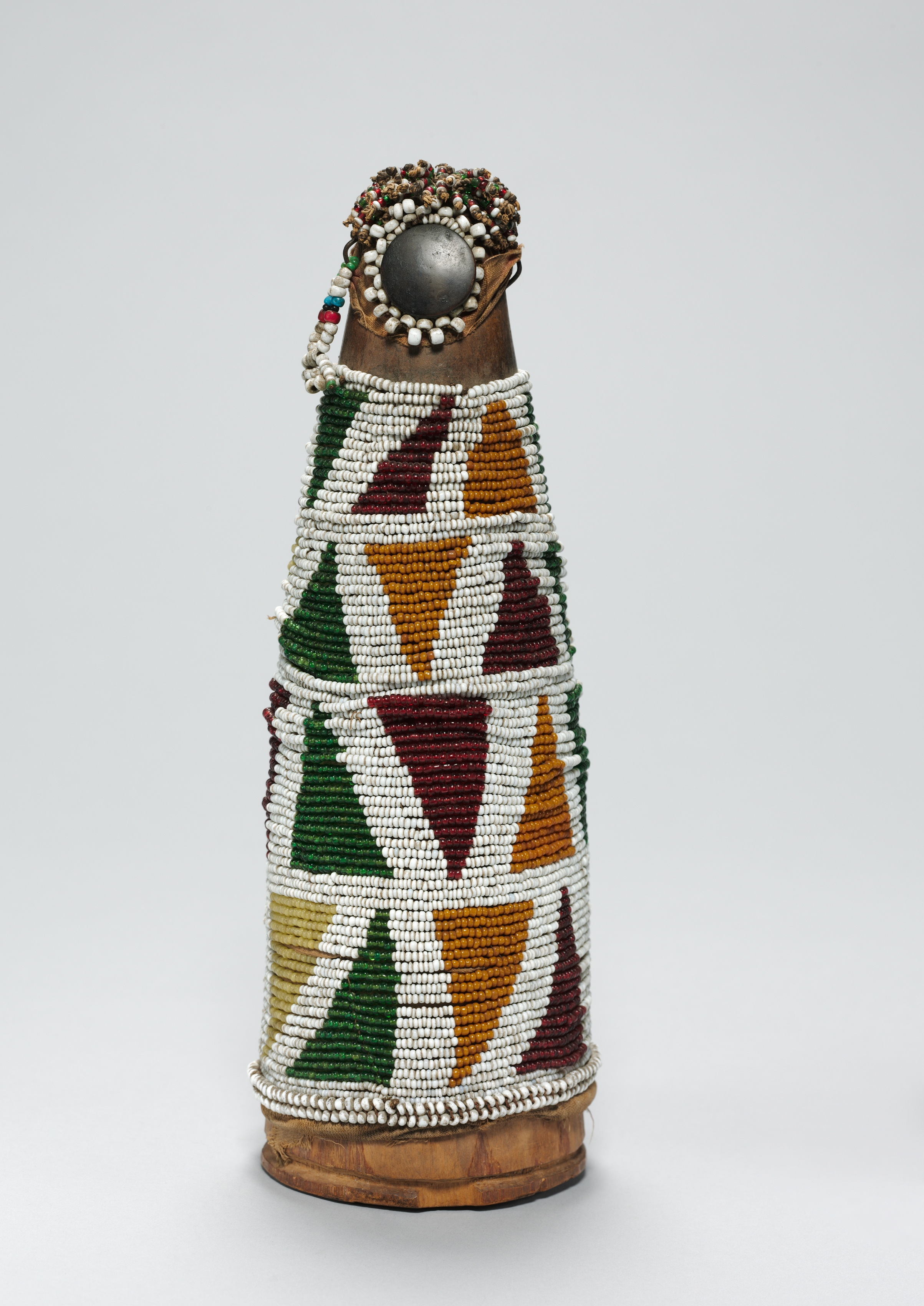The Cleveland Museum of Art
Collection Online as of April 20, 2024

Figure (kgöngwana-tshingwana/Ngwana sehô)
1800s–1900s
Overall: 25.4 cm (10 in.)
Leonard C. Hanna, Jr. Fund 2010.208
Location: 108B Southern African
Did You Know?
These figures were symbolic infants that recently married women would take care of until their first child was born.Description
Fertility figures like these were used during the initiation ceremonies of pubescent girls. Integrating talismanic materials in their fabrication, the figures were meant to guarantee fertility and prevent or cure barrenness—a gourd’s womblike shape and the seeds within symbolize fecundity. They are sometimes also called “child figures” because a young bride would care for them as she would for her future children, carrying them on her back and sleeping with them until her first child was born.- Jonathan Lowen, London2009Bowmint Collection [Nicolas Maritz], Pretoria, South Africa2010(Jacaranda Tribal Art Gallery, New York, NY, sold to the Cleveland Museum of Art)2010–The Cleveland Museum of Art, Cleveland, OH
- Riep, David M. M. 2014. "Hot Women!: South Sotho Female Arts in Context". African Arts. 47, no. 3: 24-39.Cleveland Museum of Art. The CMA Companion: A Guide to the Cleveland Museum of Art. Cleveland: Cleveland Museum of Art, 2014. Mentioned and reproduced: P. 39Cole, Herbert M. Maternity: Mothers and Children in the Arts of Africa.
Brussels : Mercatorfonds, 2017 Reproduced: p. 123, fig. 105; mentioned: p. 124 - The Art of Daily Life: Portable Objects from Southern Africa. The Cleveland Museum of Art, Cleveland, OH (organizer) (April 17, 2011-February 26, 2012).Cleveland Museum of Art, (4/16/11-2/26/12); "The Art of Daily Life: Portable Objects from Southeast Africa" cat. no. 78
- {{cite web|title=Figure (kgöngwana-tshingwana/Ngwana sehô)|url=false|author=|year=1800s–1900s|access-date=20 April 2024|publisher=Cleveland Museum of Art}}
Source URL:
https://www.clevelandart.org/art/2010.208